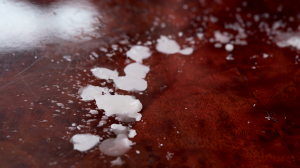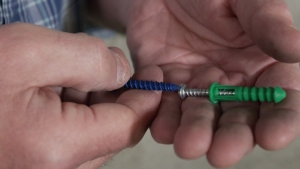Why a Clearance Hole is Important When Using Drywall Screws in Wood
Screws like these, which were originally developed for drywall and wallboard, have become increasingly popular for woodworking projects, partly because they can often be put into materials like this soft pine without even drilling a pilot hole. But you should be aware of one thing. Even though these screws can tighten up on the head like this, they may not pull two pieces of wood tightly together, as you can see right here. I've got this tight, there's still a big gap in between.
The reason is that these screws have threads all the way up to the head, so in this case, it's tightening into this piece of wood before it's tightening into this one. The solution is to drill what I call a clearance hole. Now a clearance hole should be large enough to allow the screw to drop through, without the threads having any effect. This way, when you tighten it into a second board, you can be absolutely certain that when the screw is tight here, it's also tight here. Not convinced? Well, let me show you my dollar bill test. Here are two pieces of wood, that same screw, no pilot hole. I'm gonna tighten this down. Screws tight. Let's see about the dollar bill. Slips out. Now over here, we've got our clearance hole. Let's do the same thing. We'll drive the screw in, make sure the head is tight and give a tug on the dollar bill, and that's not going anywhere.
So the next time you want to use one of these kind of screws, remember those two words, clearance hole.
Blog Articles
Have You Heard of Landscape Glue?
You love the rustic charm of a gravel walkway, but the constant scattering of stones across your lawn and patio can be a real headache. Whether it’s from pets, lawn mowers, or just foot traffic, it seems impossible to keep those stones in place. Sound familiar? Well, Brian shows us a simple DIY method using landscape glue to keep your gravel path looking pristine and, more importantly, in place.
How to Remove Candle Wax Drips: Two Effective Methods
Candles create a warm and inviting atmosphere, but those pesky wax drips can be a real headache. Luckily, Brian shows us a couple of effective methods to tackle this issue, and they involve two very different temperatures: hot and cold. Here, we'll explore two effective methods: one using cold and the other using heat.
Guide to Hanging on Masonry Walls
Ever wondered how to hang that picture frame or shelf on a brick or concrete wall? It can seem daunting, but with the right tools and techniques, it's a straightforward DIY project. This guide breaks down two common methods: using concrete screws and using anchors, making it easy for you to tackle your next hanging project.





